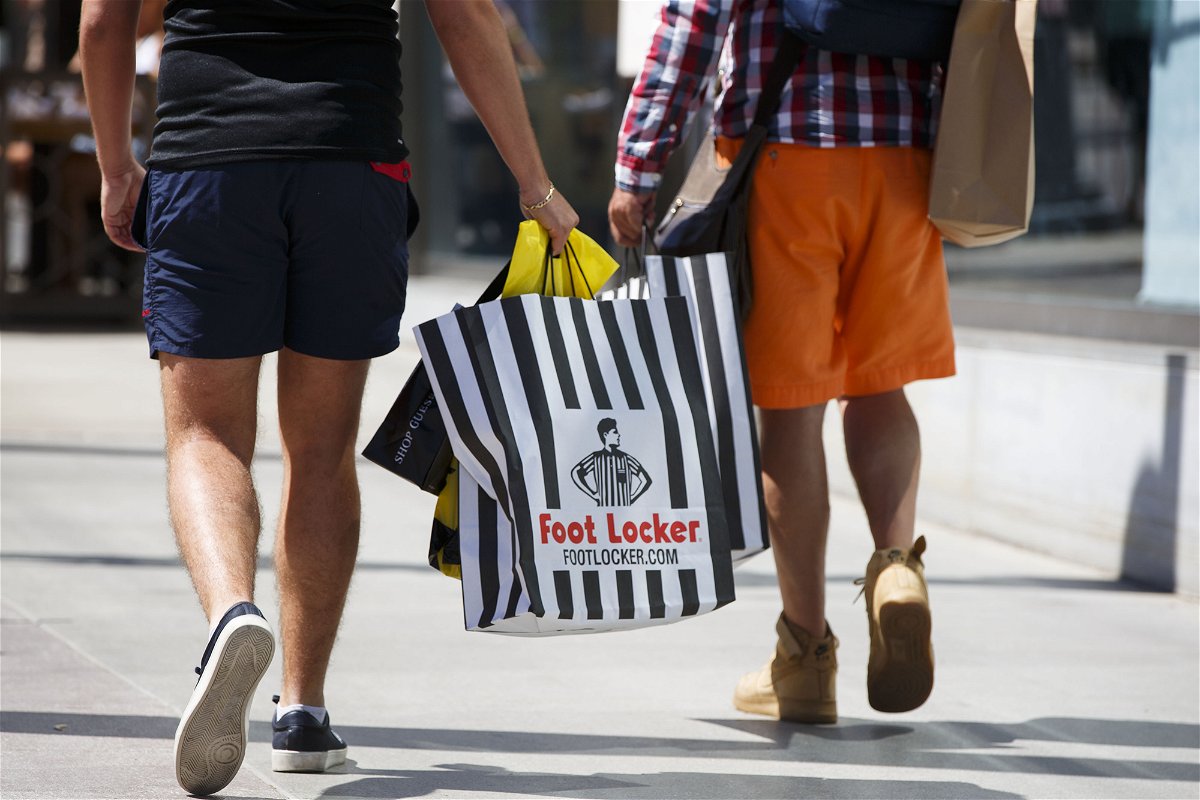Foot Locker is closing 400 stores. They may become an eyesore

Foot Locker will close 400 stores by 2026 in malls.
By Nathaniel Meyersohn, CNN
Two major retail chains are closing roughly 800 stores. One company’s spaces likely will be filled, while the other’s may become empty, and unsightly, zombie stores.
Retailers are already lining up to take over the approximately 400 shuttering Bed Bath & Beyond stores in strip malls, where customers can easily park in front. But 400 Foot Locker stores set to close in middle and lower-tier regional enclosed malls around the country will stay vacant for much longer, say retail landlords and real estate experts.
The diverging outlooks for Foot Locker and Bed Bath & Beyond real estate reflect shopping trends and the troubled state of the retail property market in the United States. The future of these spaces matters because they impact local tax bases, jobs and the economic conditions of communities across America.
Will they get a second life?
Foot Locker
Foot Locker said earlier this month that it will close nearly 200 stores in class C and D malls and 200 stores lower-performing A and B malls. (Malls are unofficially rated within the industry by letter based on their location, profitability, sales potential and other benchmarks.)
For some Foot Locker locations, “there is just no solution,” said Jeff Kreshek, a senior vice president at retail property owner Federal Realty. “The malls just have too much space and losing yet another staple of the mall will not help.”
Foot Locker’s planned closings will be just the latest blow to US regional malls.
Regional malls were built during the second half of the 20th century in an attempt to cater to a growing number of Americans leaving cities for the suburbs. These malls replaced former downtown shopping districts in cities, and were often anchored by two department stores at their ends and filled with “in-line” stores between them.
Regional malls today are usually considered B or C malls. They tend to have fewer tenants than class A malls and draw from a smaller surrounding population of shoppers. Many are older and have less natural light and open air space than their upscale competitors.
Mixed-use A malls with grocery stores, luxury retailers, restaurants, gyms and apartment buildings have been a bright spot in the retail real estate market. They are often walkable, outdoors and have a mix of tenants that gets customers to linger for longer, increasing the chances they’ll purchase something.
But Foot Locker’s planned closings will be just the latest blow to US regional malls, which struggled as online shopping took hold and the economic environment around some malls deteriorated.
Regional malls have been caught in a spiral as their department-store anchors like Sears, Macy’s and JCPenney closed. Anchor vacancies in malls hurt neighbors like Foot Locker and reduce traffic to their stores as well.
Eventually, stores like Foot Locker go dark and it becomes harder for the mall to survive. Gap, Victoria’s Secret and other brands have closed hundreds of their stores in malls in recent years.
The vacancy rate for class B and C malls during the first quarter of this year was 10.8%, an all- time high, according to real estate data firm CoStar Group. The compares to a 6.6% vacancy rate for class A malls.
“We’re seeing the continued slow death of underperforming malls in areas that are no longer prime shopping corridors,” said Brandon Svec, the national director of US retail analytics at CoStar.
Finding tenants for the 400 Foot Locker spaces will be challenging as big retailers look to stay away from weaker malls.
“It’s going to be really hard for these mall owners to attract national brands,” Svec said. “There’s a reason they’re choosing these 400.”
Bed Bath & Beyond
On the other hand, there is strong interest in closed Bed Bath & Beyond stores.
Bed Bath & Beyond’s stores are mostly freestanding locations in neighborhood shopping centers or strip malls, which are seen as more convenient than enclosed malls. They are also often next to grocery stores and other retailers that can draw customers, analysts say.
In a sign of demand trends, asking rents grew for stores in neighborhood and strip malls grew last year, but fell for indoor malls.
There is also limited availability of these kinds of properties. Between 2000 and 2009, neighborhood and community shopping centers added an average of nearly 30 million square feet a year. During this most recent decade, that level dropped to less than 10 million annually, according to Moody’s.
Discount chains with no-frills stores are likeliest to fill Bed Bath & Beyond sites. They appeal to shoppers on tight budgets and have been growing in part due to the shrinking middle class.
And discount companies are already racing to fill old bed Bath & Beyond stores. TJ Maxx, HomeGoods and Ross have scooped up vacant Bed Bath & Beyond stores.
Burlington, Five Below, Nordstrom Rack and budget gym Planet Fitness may also fill up the spaces. And department stores like Macy’s and Nordstrom are testing out smaller store prototypes away from indoor malls, which could make Bed Bath & Beyond sites appealing to them.
“You have all of these potential use cases in a format that’s desirable,” said Brandon Svec from CoStar. Bed Bath & Beyond will be “much easier to fill than in-mall spaces.”
So what happens to all the indoor malls with empty Foot Locker stores and other vacant spaces? Developers could raze the mall entirely and convert it to an apartment building, medical offices or an e-commerce warehouse. But these are large, slow projects that require major financing and, in some cases, rezoning, according to Moody’s Analytics.
“It’s this decision for landlords,” said Thomas LaSalvia, Moody’s director of economic research. “Would it make sense to try to entice a Trader Joe’s or do you bulldoze the whole thing?”
The-CNN-Wire
™ & © 2023 Cable News Network, Inc., a Warner Bros. Discovery Company. All rights reserved.